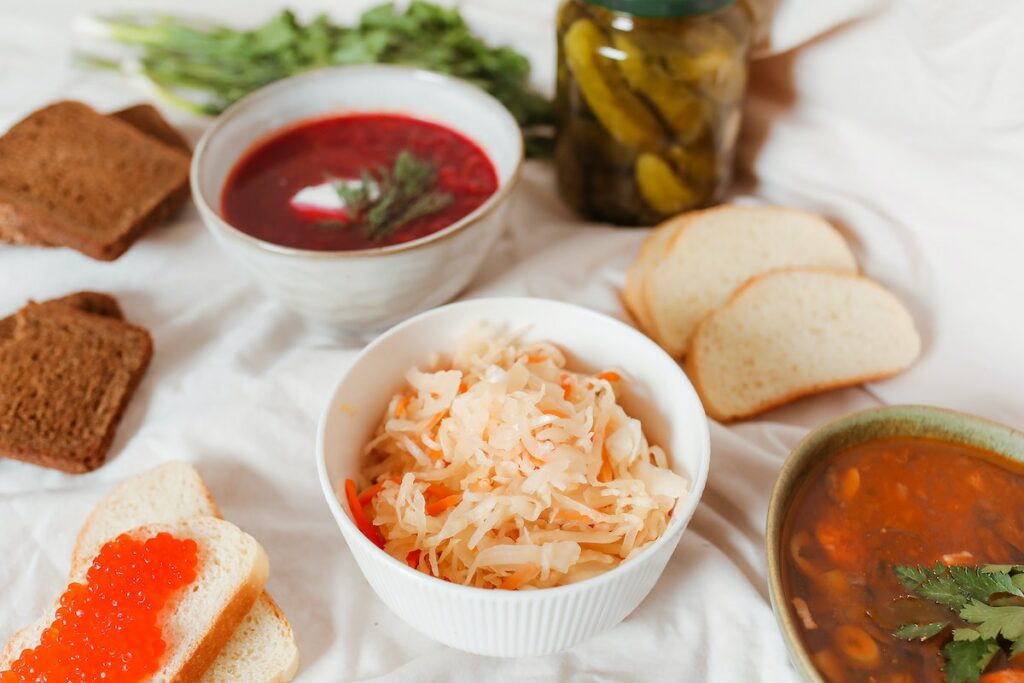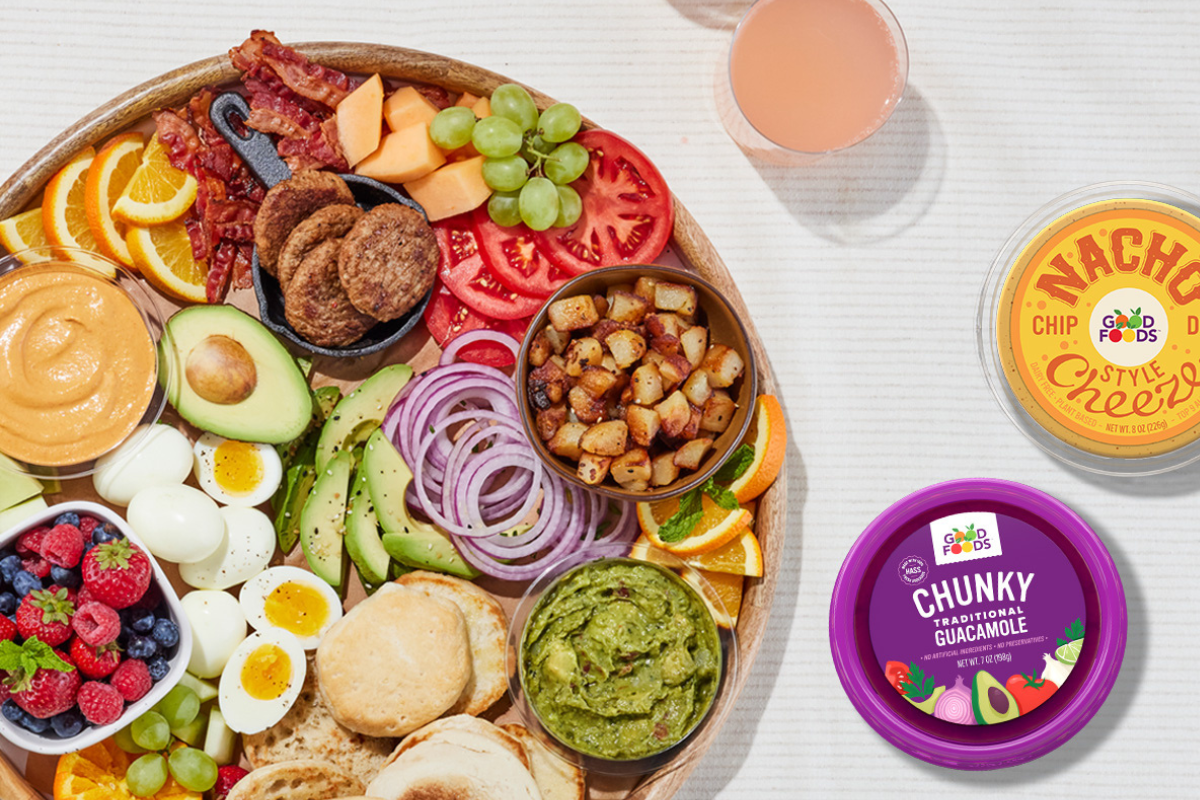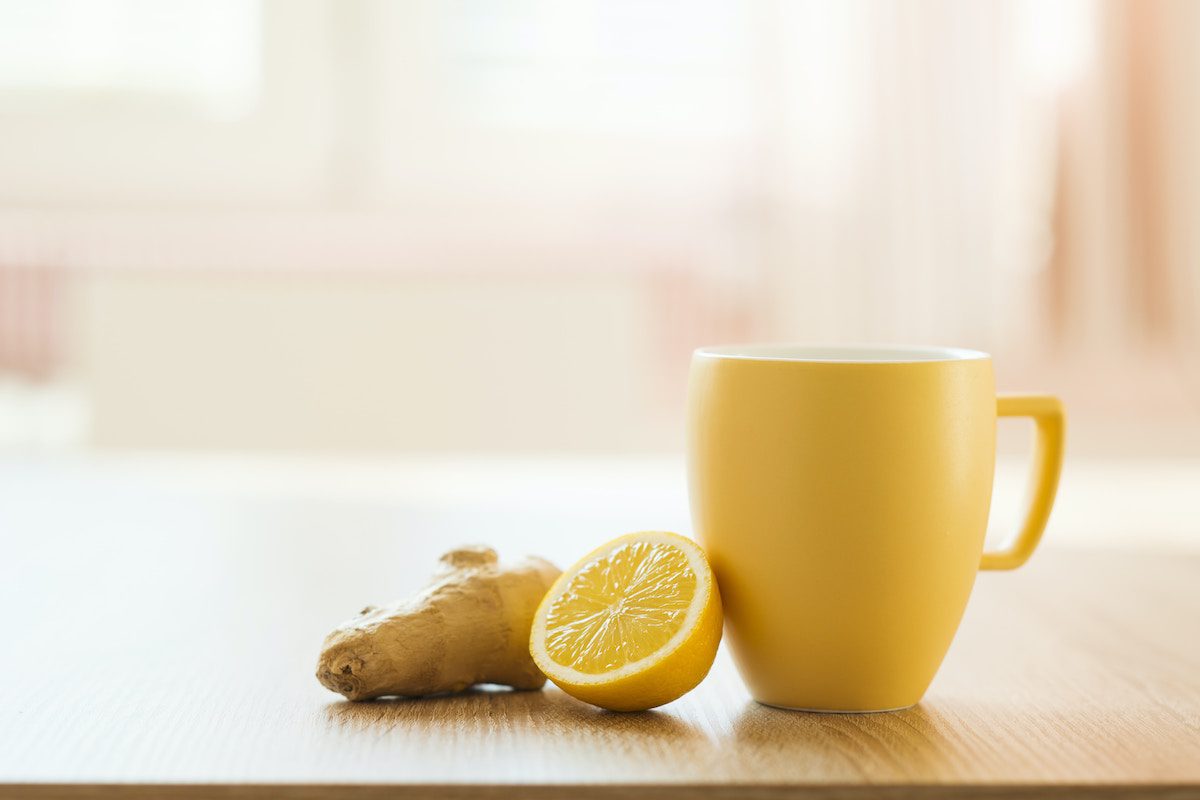Fermented Food Recipes That Are Good for Your Gut
Wanna know a secret for feeling and looking your absolute best? It’s fermented foods. That’s right — stinky cabbage, tangy kefir, and sour ‘booch are all integral to living your best healthy gut lifestyle.
Your gut health impacts far more than just your digestive system. Your immune, heart, skin, and even mental health (where your gut and your brain are directly tied via the great vagus nerve) are all impacted by what you put in your mouth.
In fact, according to Will Cole, functional medicine expert and author of the new book Gut Feelings: Healing the Shame-Fueled Relationship Between What You Eat and How You Feel, your gut makes up 70% to 80% of your immune system, produces a large amount of your “happy” neurotransmitter (serotonin), and contains 10 times more bacterial cells than you have human cells!

Why the microbiome is important
Fermented foods help to provide a whole host of probiotics to your gut and leave you with a diverse microbiome.
“When your microbiome is weakened or damaged, it can ‘switch on’ a number of potential disease processes throughout the body that may, on the surface of things, seem to have very little to do with your actual gastrointestinal system, such as autoimmune conditions, skin problems, and more,” Cole says.
Ever heard that famous saying from Hippocrates? “Let food be thy medicine and medicine be thy food?” Well, Cole says food is absolutely foundational when it comes to your health, especially your gut health, so the old adage rings true.
Eating a diet that’s minimal in processed foods and sugar and high in whole foods like veggies and high-quality animal protein “will result in a healthy, thriving microbiome as you are fueling the good gut bugs with prebiotics rather than the pathogenic bacteria strains that thrive off of sugar,” he says.
How to know if you have an imbalanced gut
Cole says since everyone’s biochemistry is unique and your gut influences so many different areas of your health, it’s difficult to pinpoint a specific symptom or set of symptoms that everyone will experience with an imbalanced gut.
“If you are experiencing chronic symptoms of any sort, the chances are high that there is a gut health component, whether that’s skin problems, autoimmunity, brain fog, depression, anxiety, fatigue, etc.,” he says.
Cole adds that while fermented foods are great, they aren’t always enough on their own to overcome severe dysfunction, and if you suspect that you’re seriously off (listen to your gut here!), it may be time to visit a doctor.
“Getting labs done will help determine your level of gut dysfunction, and if there are any other more intensive healing tools that need to be implemented,” Cole says, adding that a daily probiotic supplement, like The Probiotic from his supplement line, is also a good thing to add into your regular routine to ensure you’re getting enough probiotics on a daily basis.
Cole says bone broth is also an excellent recipe to get into the habit of making since it can benefit your gut health by helping to calm gut inflammation, soothe a leaky gut, and improve immune health.
Cole’s simple homemade bone broth recipe
Ingredients:
- 2 pounds chicken, beef, or turkey bones
- 1 tablespoon apple cider vinegar (helps to break down and release more nutrients from the bones)
- Sea salt, pepper, and garlic powder to taste
- ½ cup chopped celery
- ½ cup chopped carrots
- 1 small onion, diced
Directions:
- Place your bones, apple cider vinegar, vegetables, and seasonings in a large soup pot or slow cooker.
- Fill the slow cooker or pot with water until it covers the bones about an inch from the top and cover with a lid.
- If cooking over the stove, bring the pot to a boil over medium high-heat, reduce the heat, and let simmer between 24 to 48 hours. If cooking in a slow cooker, set it to LOW and let cook for 24 to 48 hours.
- Once cooked, strain the broth, let it cool, and store in glass containers in the fridge for up to five days or in the freezer for up to six months.
How to incorporate fermented foods into your diet
Cole says to find what fermented foods you love best and then find ways to incorporate them throughout your week. Popular fermented foods include yogurt, kimchi, kombucha, kefir, fermented soybeans (natto), tempeh, and miso.
You can also get the same benefits from sourdough bread, certain aged cheeses (check the label for “live and active cultures”), and refrigerated pickled veggies (not the kind pickled in vinegar — look for the words “naturally fermented” on the label and look for bubbling when you crack open the lid).
Here are a few fermented food recipes worth trying:
Cole loves sauerkraut and says it’s something that’s easy to add to multiple different recipes. “It goes great in soups, on top of salads, on burgers, and multiple other kinds of dishes,” he says. A really simple recipe for making sauerkraut comes from popular blogger Michaela Vais of ElaVegan, who just released her new cookbook Simple and Delicious Vegan.
Usually, you’re drinking kombucha straight out of the bottle but it holds the same gut-healthy properties when you cook with it as well. Adding it to marinades, sauces, and salad dressings is a terrific way to nab the gut healthy benefits while also masking the taste a bit if it’s not your thing. Cultures for Health not only has booch-making kits but also offers simple recipes on their blog, such as this one for a kombucha-based dressing.
Tempeh is made from fermented soybeans and has fantastic health benefits in addition to the gut health properties. A serving will give you various vitamins and minerals like calcium, manganese, phosphorus, and iron. It has a firm and meaty texture, making it the perfect swap for anyone seeking another source of protein. Check out the Nora Cooks recipe for tempeh bacon to add this fabulous ferment to your next breakfast feast.
This may be one that you haven’t heard of before, but natto is worth checking out. Another one made from fermented soybeans, natto provides calcium, vitamins C and K2, fiber, and probiotics. Food blogger and photographer Ellie Yamanaka breaks down the basics of this Japanese breakfast staple seasoned with soy sauce and scallions.
Once you get a good recipe for ferments down, it’s easy to keep a mason jar of whatever tickles your fancy in your fridge. Not only is it cheaper to make yourself but it’s easy to add a forkful to nearly any meal, making getting a daily gut health serving a cinch. Check out this recipe from Emillie at Fermenting for Foodies blog, where she shares not only her recipes for fermented carrot sticks, onions, kimchi, dill pickles, and Italian pickled vegetables but video tips as well.












